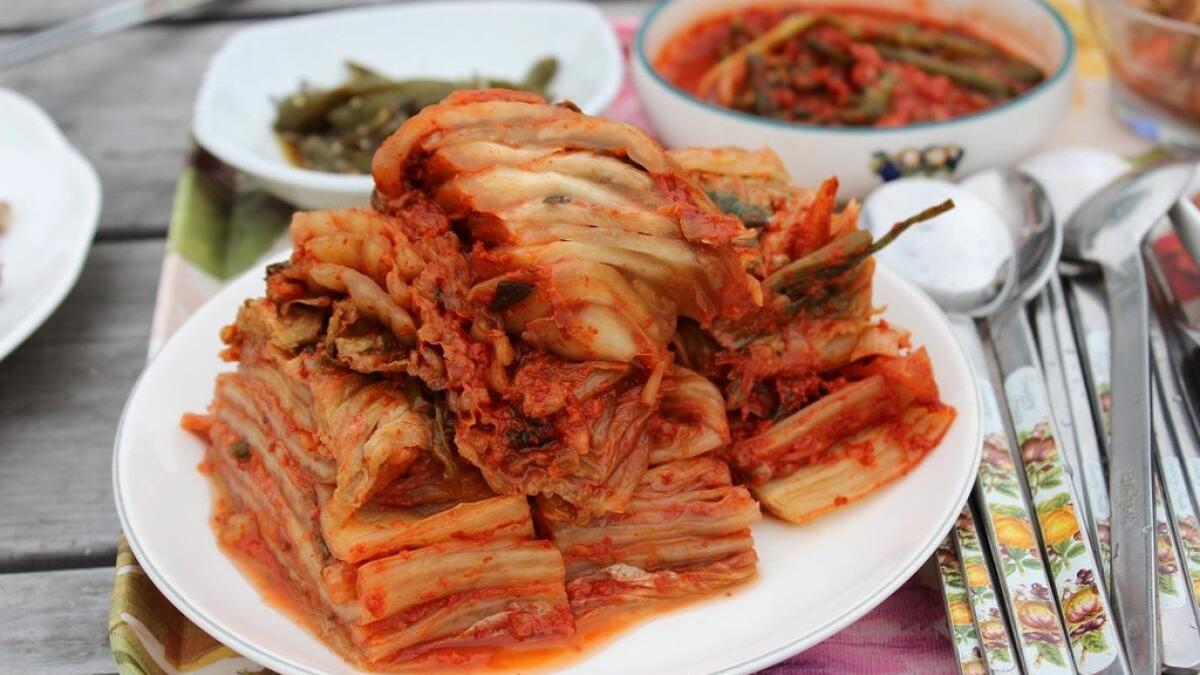
Bengaluru K-wave: How Korean food is taking over city restaurants
The Hindu
Korean food and ingredients are becoming popular in Bangalore restaurants, thanks to K dramas and K pop
Early this year I noticed long queues stretching along my street every evening. The otherwise quiet lane in Koramangala was suddenly abuzz with college students in baggy jeans and chunky sneakers. The reason – a new Korean fast food kiosk called Corn Dawg. Dishing out Korean corn dogs, or Gamja hotdogs, this joint had caught the attention of diners online who were flocking to it from across the neighbourhood. This snack is a panko-crusted and batter-fried sausage on a stick. I didn’t know about corn dogs a couple of years ago, and now here it was, literally at my doorstep.
And it is not just these cheesy dogs, everything Korean is burgeoning in popularity. K-pop stars have enthusiastic fan followings. And thanks to Korean dramas, the food culture of the South-East Asian country is something that Indians treat with curiosity and interest.
“I got into K-dramas in 2022. I often see the characters heading out after work to grab Korean bbq on skewers, or go on a date to a street food cart. Now whenever I see a Korean restaurant, I even feel like going and trying it,” says Ananya Bejoy, a college student. Open any delivery app, and you’ll see Korean burgers, fried chicken, bingsu (a shaved ice dessert), hotteok (pancakes) and kimbabs (the Korean version of sushi rolls). From gourmet restaurants to street food carts, everyone is on the trend.
Homiga is a Korean barbeque restaurant that launched five months ago in Forum Rex Walk on Brigade Road. Minseong Seok, the co-founder who is from Seoul, has spent more than a decade in India. After the success of his other brand Daily Sushi, Minseong opened Homiga.
“We do feel that the popularity and interest in Korean cuisine has increased significantly compared to the past. We especially feel that the global interest in many cultural and artistic exports, such as Korean dramas and K-pop music, is extending to an interest in food culture too,” he says. He adds, “Korean cuisine was not easily accessible overseas for various reasons, including ingredient sourcing and complex cooking methods. However, more diverse Korean ingredients are being imported and distributed recently, so we believe that more diverse Korean dishes can be introduced to Indian consumers in the future.” Their most popular menu items are samgyeopsal (pork belly barbecue) and dak gui (chicken barbecue). Sundubu jjigae (soft tofu stew), nakjibokkum (spicy stir-fried baby octopus), and tteokbokki, a popular snack, are also popular menu items.
Of course insiders know that Korean cuisine itself is not new to Bengaluru. The city had a few well- kept secrets: Hae Kum Gang on Castle Street has been around since 2004. In these two decades of service, they have seen a lot of changes. Manager Nirmal Tamag says earlier their clientele was only 15% local Indians, and the rest were expats. But nowadays it is a healthy mix of both. “Now when people come they know a lot of dishes already. Earlier many people were so unfamiliar with the cuisine they would walk out. On the other hand, earlier we were one of the only Korean restaurants in town. Now people have many other options too,” he says.
Noted chef Gautam Krishnankutty who used to run famous restaurants like The Smoke Co, and Thulp, likes to incorporate Korean ingredients into his dishes that he offers in his pop ups. When he makes char siu pork, he marinates the meat in gochujang. The fermented chilli paste adds a layer of funk to the dish.

The Karnataka government has drafted a comprehensive master plan for the integrated development of Kukke Subrahmanya temple, the State’s highest revenue-generating temple managed by the Hindu Religious Institutions and Charitable Endowments Department. The redevelopment initiative is estimated to cost around ₹254 crore and aims to enhance infrastructure and facilities for devotees.












